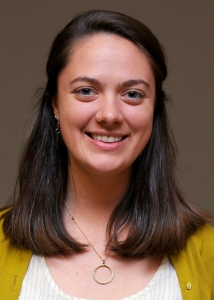 By Emilie Bouvier
By Emilie Bouvier
Hush, hush, my little root … my little pod
Hush … hush … my little grandmother
I read these words from Meridel Le Sueur two mornings ago to a room of women, rapt with silence, early in the morning on the first full day of the annual winter women’s retreat at Holden Village. My eyes strained as they read the lines in the low light, with images of my original artworks projected behind me. I chose to pair my “land-formed” photographs, as I like to call them, with texts of women – mystics, poets, theologians, and ordinary women who shared with me their wisdom. This cloud of voices spoke together about the land, about fire ecology, justice, seed and egg, grandmothers, light and obscurity.
After the last reading and the silence returned, I listened. I invited the room to share responses. One by one, these women started sharing deep and moving stories. One spoke of her love of the plains, the landscape she grew up in. Another shared through tears of emotion what it meant to her to trace her grandmother’s journey of immigration, and her learnings of how family histories are passed through our bodies, especially in the bodies of women. Another confided her struggles with male images of God and her longing for spiritual experience of God through the feminine. Another shared her own experience of forest fire, loss, and reshaping of her relationship with the land.
“The beauty of difference is that we each get to tell our own stories.”
I was floored. There was no way I had expected this deep or vulnerable of a response so immediately. This was the first time I had tried out pairing the images directly with reading that have grounded their making. In some ways it was hard to not jump in and start explaining, to let the varied voices have their own integrity and give them time to speak. But this clearly worked. Why?
THEN IT HIT ME – an old insight, returning. In my seminary days, I took a class with Sarah Bellamy of Penumbra Theatre, entitled Bearing Witness, the Power of Story. One of the many things I learned from her is that the best way to tell a story is not in the abstract, but in the particular. If you try to say something that speaks to everyone, you may well end up speaking to no one. But if you tell your own story in all its particularity and detail, it has the power to stir up story in others – even if that story for them is quite different.
This speaks to me also in the story of our faith. Holden is a place rooted in Lutheran-Christian identity but is open and welcoming to people of all (or no) faith background(s). I worship beside fellow community members who identify as agnostic, Buddhist, atheist, and non-denominational. Sometimes, in the presence of difference, we want to pull back and make a space held and word spoken one that encompasses everything – leaning toward the abstract and open. Yet, I think that can often do us a disservice. The beauty of difference is that we each get to tell our own stories, and in their gritty particulars, invite the experience and emotion of others, even if sometimes it’s held in tension with our own.
“If you try to say something that speaks to everyone, you may well end up speaking to no one.”
As we find ourselves in the space between the incarnation and the cross, I hold to the particulars of our Jesus story – the water-breaking, baptismal-claiming, teaching, healing, dying, rising, story of Christ. As we journey through these seasons, I hope you meet God in the details of the stories and that they give you good courage to share your own.

